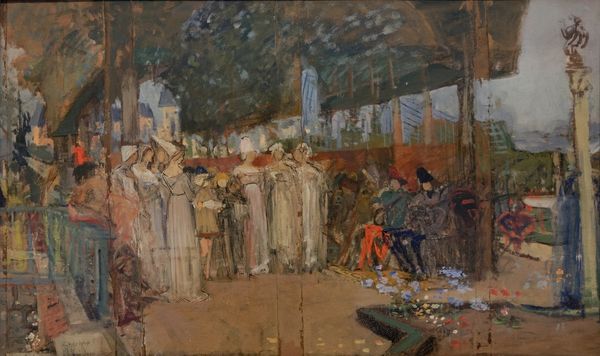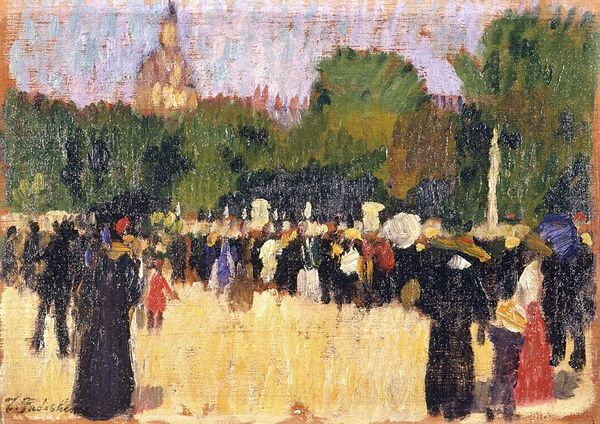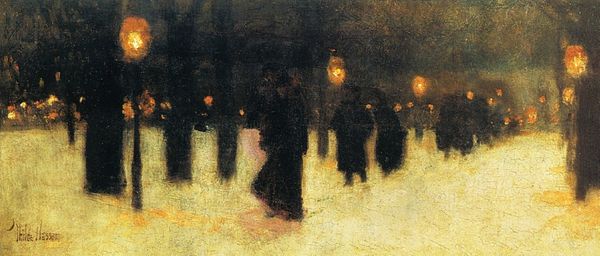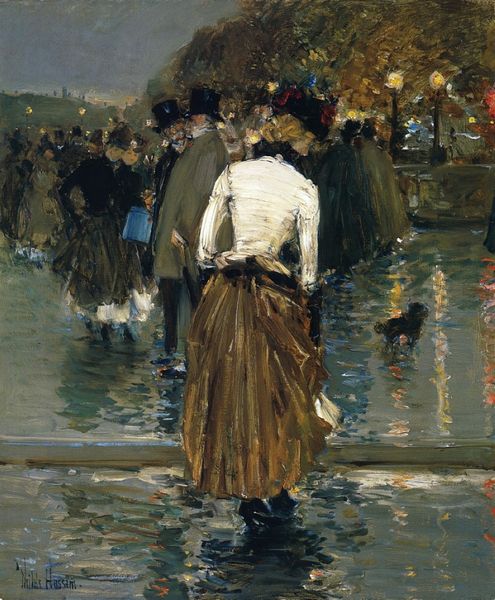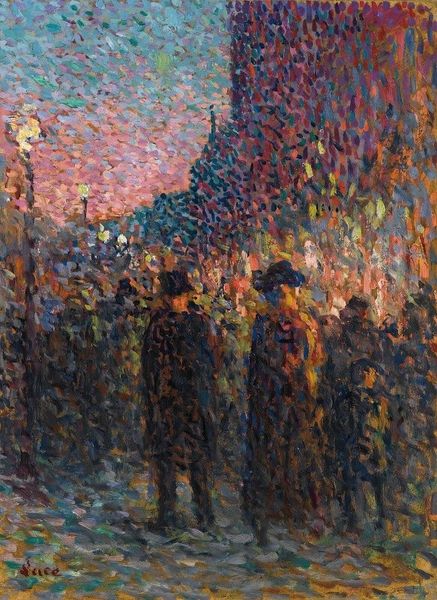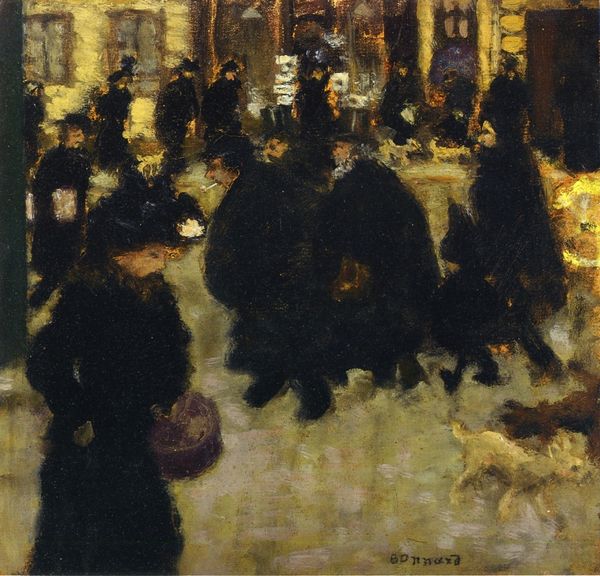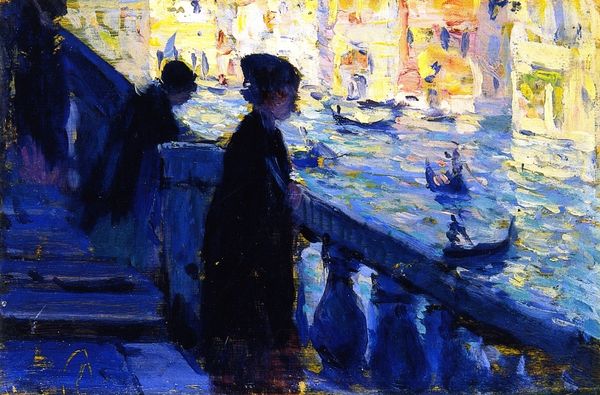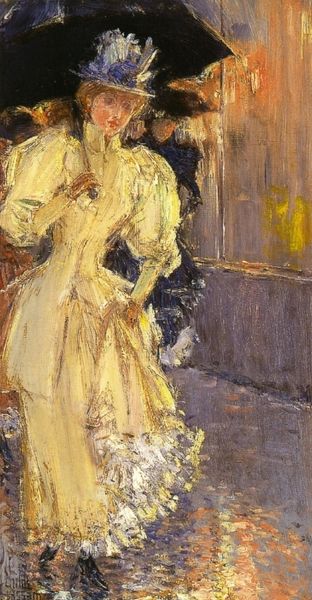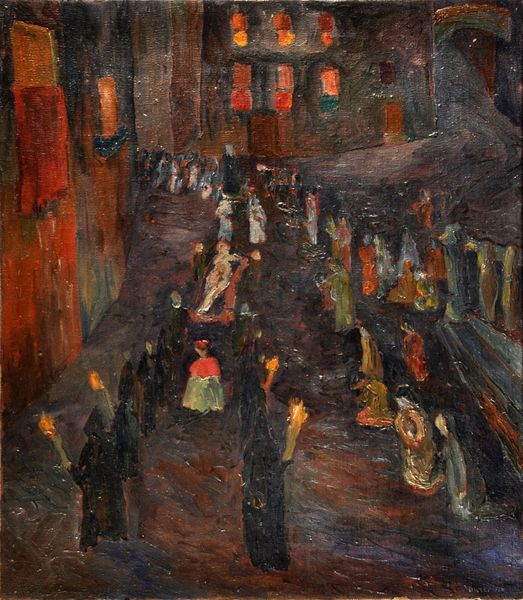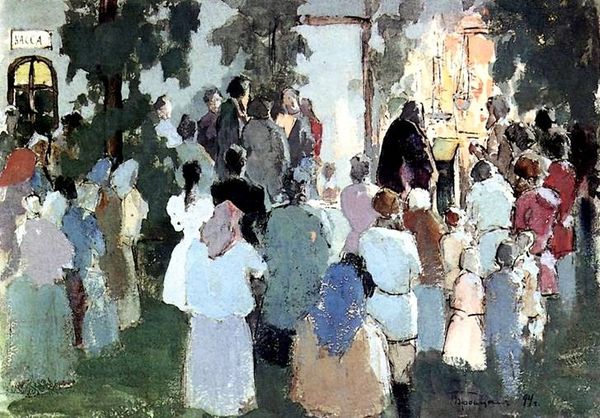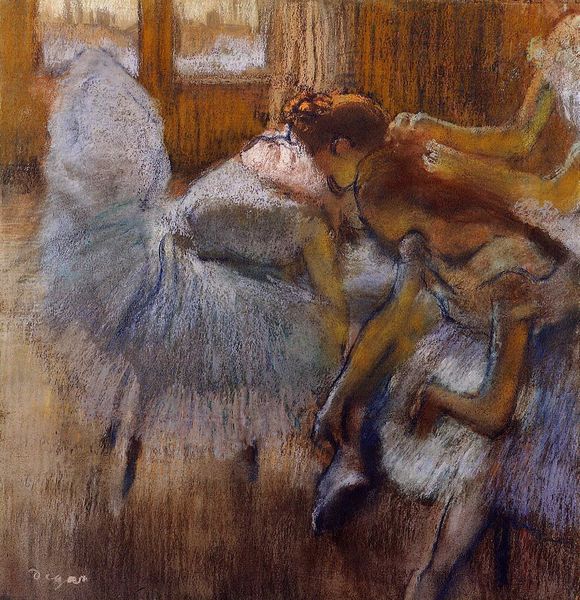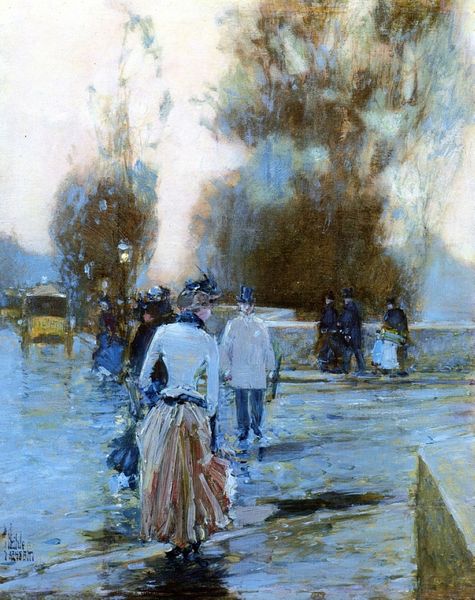
painting, oil-paint
#
portrait
#
painting
#
impressionism
#
oil-paint
#
impressionist landscape
#
oil painting
#
cityscape
#
genre-painting
#
modernism
Copyright: Public domain
Curator: Charles Conder’s oil painting, “The Moulin Rouge”, dating back to 1890, is before us now. It's such an iconic depiction of Parisian nightlife. Editor: What strikes me immediately is how hazy and warm it feels, like stepping into a dream. It’s like the memory of a night out, all glittering lights and shadowy figures. The blurry figures give the painting this impression of movement, as though the crowd is actually buzzing! Curator: Conder’s technique is remarkable. Look closely and you will appreciate how he applied quick, loose brushstrokes to evoke the vibrant atmosphere of the Moulin Rouge, as a popular performance venue for diverse artistic groups such as dancers, musicians, writers, and painters of the era. This style mirrors the fast-paced, transient nature of modern life at the time. Editor: Absolutely! You almost hear the music and the murmur of conversations, which I love. Though he doesn't include strong details, each blur is suggestive. What kind of perspective is it playing with? The light source seems to emanate outwards from the dancers... like moths to a flame, eh? Curator: Conder, along with artists like Toulouse-Lautrec, significantly challenged traditional notions of what was acceptable subject matter in art. This move helped to bridge the gap between academic painting and the burgeoning avant-garde. He really makes the spectacle the subject here; the crowd as essential and not only a backdrop. It’s a comment on collective experiences and modern social interactions, which makes me want to observe their clothes in more detail: the fabric textures, the specific stylistic construction methods used by ateliers to emphasize class distinctions at the Moulin Rouge... Editor: True, there's so much implied that one barely needs clear articulation. Seeing it all laid out so simply lets the painting breathe, capturing a single instant. It encourages you to fill in the blanks with your own imaginings... Curator: Considering its historical context, it underscores the democratization of art consumption in response to broader socio-economic changes. Editor: It also really encapsulates something universal about our collective memory of shared nights out. Curator: Indeed. Conder captured more than just a scene; he captured an era defined by dramatic cultural shifts and creative fermentation. Editor: A vibrant whisper into the past. That's all there is, really, isn't it?
Comments
No comments
Be the first to comment and join the conversation on the ultimate creative platform.
